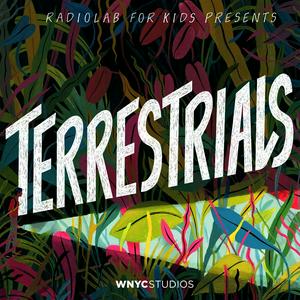Artist Ashley (Ash) Eliza Williams was so shy growing up that they found it hard to speak to people. Instead, they withdrew from the world of humans and found comfort in the forest, where they spent hours exploring, scavenging, and collecting — eventually discovering lichen. They began painting portraits of lichen’s wild, colorful, and fuzzy shapes. In time, Ash learned that lichen is actually a composite organism, a mixture of two species — algae and fungi — working together to live. This idea originally challenged evolutionary theory so much that scientists didn’t believe it. But lichen had much more to teach us. Chef Prashanta Khanal fills us in on the food science of lichen, and how its collaborative powers also extend to making certain foods healthier! Learning that lichen draws its strength from collaboration eventually encouraged Ash to break out of their shell and reconnect to the world, where they would find not just friends and collaborators, but their true love.Since the release of this podcast, artist Ash Eliza Williams goes by Ash and uses they/them pronouns.Check out Ash Eliza Williams’s beautiful paintings.Visit chef Prashanta's cooking blog, the Gundruk, for more on Nepali food history and recipes.This episode features punk rock legend Laura Jane Grace, who makes a musical cameo on the song The Fuzzy Ruckus. Watch the music video and find the link to stream on our songs page.Terrestrials was created by Lulu Miller with WNYC studios. This episode was produced by Brenna Farrel, Mira Burt-Wintonick, Alan Goffinski, Ana González, Tanya Chawla, Joe Plourde, Sarah Sandbach, Valentina Powers and Lulu Miller. Fact-checking by Diane Kelly. Transcription by Caleb Codding. Special thanks to Siya Sharma-Gaines, Niran Bhatt Scharpf, Scott LaGreca, and Sarita Bhatt.Our advisors are Ana Luz Porzecanski, Andy J. Pizza, Anil Lewis, Dominique Shabazz, Liza Demby, Princess Daazhraii Johnson and Tara Welty.Learn more about storytellers, listen to music, and dig deeper into the stories you hear on Terrestrials with activities you can do at home or in the classroom on our website, Terrestrialspodcast.org.Badger us on social media: @radiolab and #TerrestrialsPodcast or by emailing us at
[email protected].
Hey grownups!Love the show? Leave us a rating and review on your podcast app—it helps curious listeners find us!We're also looking for listener feedback! Share your thoughts with us here.While you wait for the new season, subscribe to our weekly newsletter for bite-sized essays, activities, and ways to connect with the show. Sign up here.Follow us on Instagram and TikTok @terrestrialspodcast for behind-the-scenes extras and more.Terrestrials is made possible in part by the generosity of listeners like you. Support the show by joining Radiolab’s membership program, The Lab—and we’ll send you a special thank you gift from our team!Support for Terrestrials also comes from the Simons Foundation, the Arthur Vining Davis Foundations, and the John Templeton Foundation.
